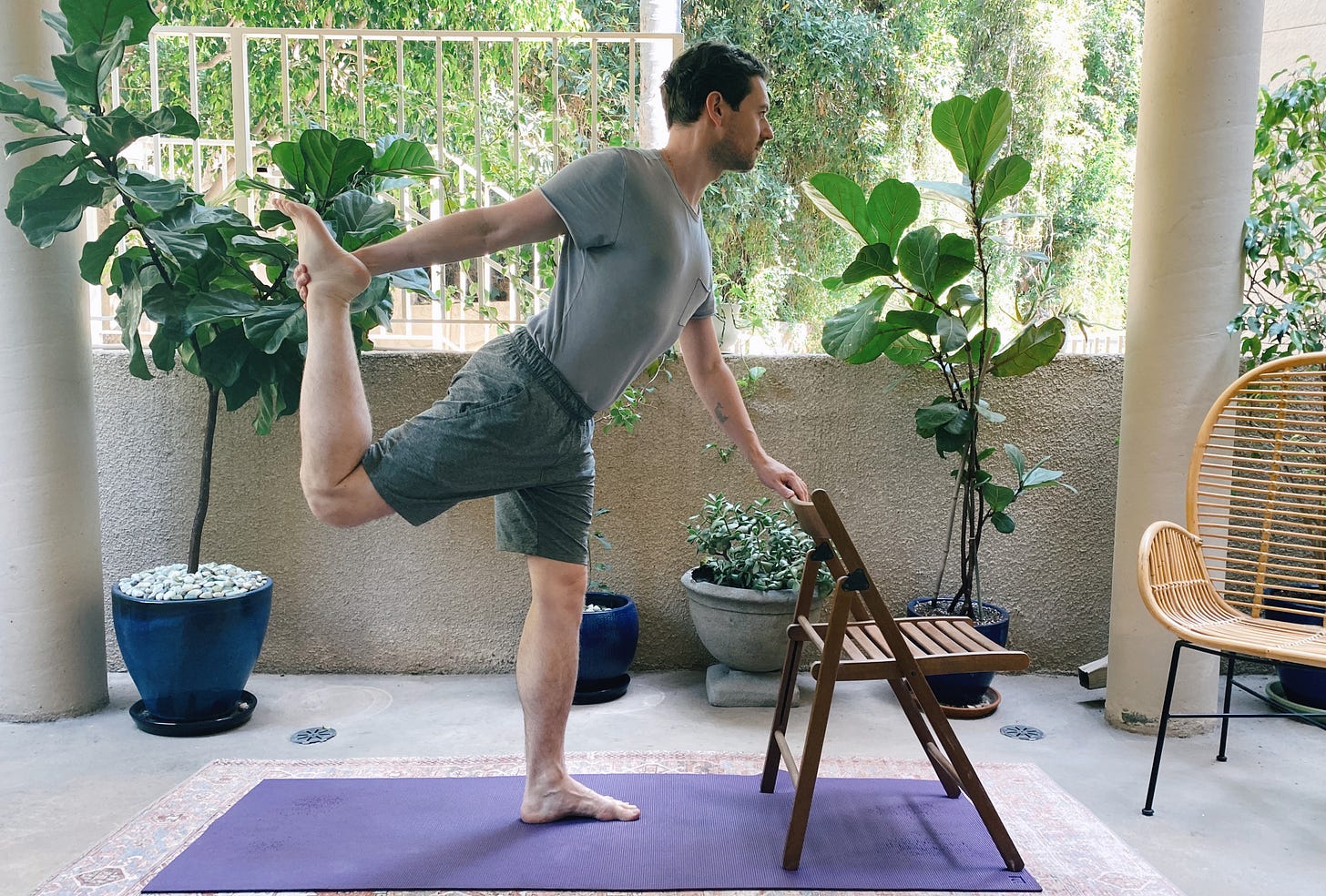More than one way to dance
Practical strategies for teaching Natarajasana with inclusivity and creativity.
Each month in the Enlightened Yoga Collective we focus on a different theme or pose to inspire your class planning!
The Monthly Class Inspiration for October is Dancer Pose!
There is no single “right” way to practice or teach any yoga pose. That includes Natarajasana, a beautiful but demanding asana that combines balance, backbending, and focus.
As teachers, we can support our students by offering multiple entry points into a pose. This allows every student to experience the key actions and benefits of the pose in a way that suits their unique body. It also empowers them to choose the variation that feels most supportive on any given day.
[Premium members - click the play button above the introduction to listen to the audio version of the newsletter and make sure you scroll all the way to the end to download your exclusive printable Quick Reference teaching guide on Dancer Pose variations.]
Why adapt Dancer Pose?
The traditional version of Dancer can feel inaccessible for students with balance challenges, tight hip flexors, or limited shoulder mobility. However, the essence of the pose — cultivating grace, stability, and focus — can be explored through a range of variations. Each approach gives students a chance to develop a sense of stability in the standing leg, openness across the front body, and the mental steadiness that comes from balancing effort with ease.
Warming up
Before guiding students into any version of Dancer, prepare the body with:
o Shoulder and chest stretches (Cobra, Camel)
o Hip stretches (Low Lunge)
o Balance primers (Tree Pose, Warrior III)
Join me for an in person training in 2026!
Early bird pricing on the South Wales, Edinburgh and London events has been extended until the end of October!
Five variations to explore and teach:
Floor variation
Lying on the side and holding the top foot (or using a strap) takes the demand of balance away while still introducing the shape of the pose.
This is ideal for students who need stability or who are new to backbending.
It allows you to highlight alignment principles such as keeping the hip bones facing forward and the chest lifted, without the distraction of balancing.
Seated on a chair
Practicing with the support of a chair offers stability while targeting hip flexor opening and shoulder mobility.
This version is particularly useful for students who struggle with balance or who need reduced weight-bearing.
It demonstrates that Natarajasana can be explored in a grounded, supported way while still strengthening the back body and improving focus.
Supported at wall or chair
Using the wall or chair as a prop reduces fear of falling, helping students commit more confidently to the shape.
This variation builds both balance and strength while providing the reassurance of support.
It is an excellent stepping stone between seated or floor versions and the traditional pose, and it allows students to progressively build resilience and stamina.
With a strap
Looping a strap over the lifted foot provides extra reach for students with limited shoulder or hip mobility.
Holding the strap overhead encourages length through the spine and opens the chest, while keeping the hip bones facing forward.
This variation also increases proprioception and helps students refine their alignment, making it a valuable teaching tool in both beginner and mixed-level classes.
Traditional standing Dancer
This is the version most students recognise. It challenges balance, strength, mobility, and focus all at once.
Teaching it with clear cues around pelvic alignment, chest lift, and drishti helps students approach it with awareness rather than striving for depth.
It offers a playful way to explore grace and stamina.
Each version gives students a way to “dance” in their bodies, meeting them exactly where they are while honouring the essence of the pose.
The next time you introduce Dancer in class, frame it less as a peak pose and more as an opportunity: a chance for students to practice curiosity, explore variations, and celebrate each attempt. That shift in perspective can turn a potentially intimidating pose into one of the most empowering moments of the practice.
P.S. If this week’s topic resonated with you, here is a great way to dive deeper:
→ The Enlightened Yoga Collective supports inclusive, accessible teaching. The Monthly Class Inspiration for October is Dancer Pose!
We’ll be including:
✨A pdf breaking down these 5 variations
✨A full yoga practice for you to steal or adapt!
✨A shorter helpful tutorial
Premium members, download the printable Quick Reference teaching guide on Dancer Pose variations here:
Keep reading with a 7-day free trial
Subscribe to Yoga Anatomy Insights to keep reading this post and get 7 days of free access to the full post archives.








